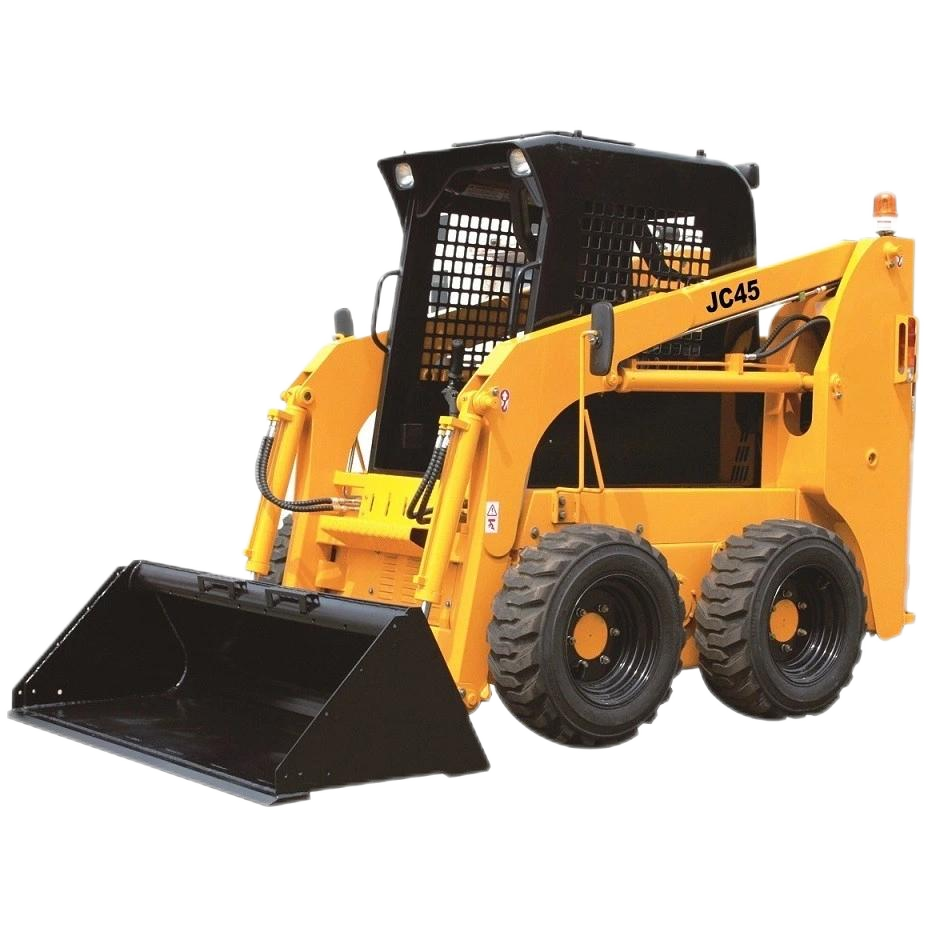When choosing a small-tonnage loader, skid-steer loaders and wheel loaders (referring to traditional wheel loaders here, usually with a small tonnage of 1-3 tons) each have their own focuses. The decision needs to be made based on specific operating scenarios, functional requirements, and usage environments. The following analysis is carried out from aspects such as core differences, applicable scenarios, advantages and disadvantages to help you make a more appropriate choice:

I. Core Differences: Structural and Functional Positioning
| Dimension | Skid-steer Loader | Small-tonnage Wheel Loader |
|---|---|---|
| Structural Features | Compact body (short wheelbase, extremely small turning radius, capable of in-place steering), narrow tires, low chassis, "skid-steer" designed boom, and quick attachment replacement. | Relatively slender body (similar to a scaled-down version of large loaders), wide tires, high ground clearance, traditional lifting boom, mainly used for bucket operations, with low flexibility in attachment replacement. |
| Core Function | Centered on "versatility" and "operation in narrow spaces", relying on a variety of attachments to achieve switching between multiple scenarios. | Centered on "efficient shoveling and short-distance transportation", focusing on bulk material loading and unloading, with relatively single functions but strong professionalism. |
| Power and Tonnage | Usually with smaller tonnage (mainly 0.5-2 tons), moderate power, and more emphasis on flexibility rather than heavy-load capacity. | Mostly 1-3 tons, power matching focuses more on shoveling efficiency, and heavy-load capacity is better than skid-steer loaders of the same level. |
II. Comparison of Applicable Scenarios
- Scenarios where skid-steer loaders are preferred
- Install a bucket to shovel sand and gravel, replace with a breaker to crush concrete, replace with a sweeper to clean the site, replace with a forklift attachment to carry pallets. One set of equipment can replace multiple tools.
- Municipal maintenance (such as sidewalk breaking, green belt cleaning), agriculture (feed transportation, greenhouse cleaning) and other scenarios.
- Operations in narrow spaces: Such as interior decoration (basements, workshops), roadway construction, community corridor renovation, warehouse internal cleaning, etc. Its in-place steering capability (no need to reserve turning space) and compact body (usually 1-1.5 meters in width) can easily cope with narrow environments.
- Need for multi-type work switching: When frequent switching of operation types is required, skid-steer loaders have significant advantages. For example:
- Requirements for light load and flexibility: The weight of the operating materials is light (such as wood chips, organic fertilizers), high-intensity shoveling is not required, and more emphasis is placed on the convenience of equipment transfer (can be transported by trailer) and operational flexibility.
- Scenarios where small-tonnage wheel loaders are preferred
- Mainly engaged in bulk material loading and unloading: Such as small sand and gravel yards, building materials markets, farms (shoveling feed, manure), etc. It is necessary to efficiently complete the "shoveling - loading" cycle. Wheel loaders have larger bucket capacities (usually 0.5-1.5 cubic meters), fast lifting speed, and higher continuous operation efficiency than skid-steer loaders.
- Operations in open outdoor spaces: Such as rural road repair, foundation leveling of small construction sites, farmland water conservancy dredging, etc. There is no space restriction on the site. Wheel loaders have a faster driving speed (usually 15-25km/h), making long-distance material transportation more labor-saving.
- Requirements for light heavy loads: Occasionally need to shovel heavier materials such as stones and concrete blocks. Wheel loaders have a more stable chassis, strong tire grip (wide tire design), and better overload resistance than skid-steer loaders.
III. Summary of Advantages and Disadvantages
| Type | Advantages | Disadvantages |
|---|---|---|
| Skid-steer Loader | 1. Extremely strong space adaptability, irreplaceable in narrow sites; 2. Rich attachments (more than 30 types), diverse functions; 3. Light body, low ground pressure (suitable for vulnerable ground such as lawns and interiors). | 1. Small bucket capacity, low continuous loading and unloading efficiency; 2. Relatively complex operation (need to adapt to skid steering); 3. Higher price (20%-50% more expensive than wheel loaders of the same tonnage). |
| Small-tonnage Wheel Loader | 1. High shoveling efficiency, suitable for batch material transportation; 2. Simple operation (similar to forklifts, easy to learn); 3. Low maintenance cost, popular accessories. | 1. Large turning radius, unable to operate in narrow spaces; 2. Single function, relying on buckets, troublesome attachment replacement; 3. High ground pressure (easy to damage lawns, floor tiles). |
IV. Decision-making Suggestions
- If the operating scenario is fixed and mainly focused on "loading and transporting materials": Choose a small-tonnage wheel loader, which has higher cost performance and better efficiency.
- If the operating scenario is complex (multiple types of work, multiple sites), especially involving narrow spaces or requiring multiple functions: Choose a skid-steer loader. Although the initial investment is high, the comprehensive utilization rate is higher.
- With limited budget and mainly engaged in outdoor light operations: Prioritize small-tonnage wheel loaders (such as 1-ton class) to meet basic needs.
- Special scenarios (such as interior decoration, municipal fine operations): Skid-steer loaders are the only choice, and their flexibility is irreplaceable.





